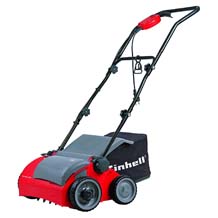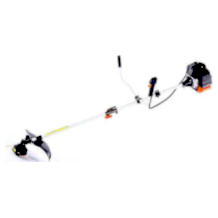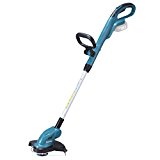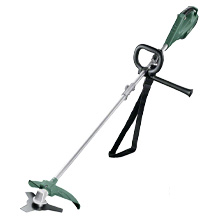Robot lawn mower purchasing advice: how to choose the right product
- What You Need to Know
- Robotic lawnmowers mow the lawn independently at set times and days of the week. They also recharge the batteries themselves.
- Robotic mowers are mulching mowers and do not have a collection container. They only trim the tips of the grass blades. This falling mulch improves the nutrient supply of the lawn.
- Robotic mowers are relatively low-maintenance. Cleaning the cutting blades once a week and replacing them every four to six months is sufficient.
- Modern robotic mowers can also be controlled by app via smartphone, tablet or voice assistant.
- A robotic lawnmower regularly maintains prepared lawns. It is unsuitable for wildly growing meadows or tall grass. Steep slopes also cause problems for some models.
Automated lawn care
From mid-March until October, gardeners have their hands full with sowing, planting, weeding and watering. Lawn care is also one of the routine tasks. Thanks to regular cutting of the blades, the lawn looks dense, full and lush green. However, weekly lawn mowing is a tiresome task for many garden owners, especially if the lawn area in the garden is larger or bulky due to a winding layout and various garden furniture. This is where electronic helpers can step in and take over the constant mowing of the lawn: Robot lawnmowers. In addition to making the work easier, there are other good reasons for purchasing them.
What are the advantages of a robotic lawnmower?
The biggest advantage of a robotic lawnmower is also the most obvious: it works independently. The owner uses the boundary wire supplied to mark out the lawn area that the electronic garden helper is to plough. Then he sets the mower to do its work when he wants it to, for example three times a week. The robotic lawnmower then performs its work independently at the specified times. The gardener does not need to worry about recharging either. The robotic lawnmower rolls itself into the charging station to recharge.
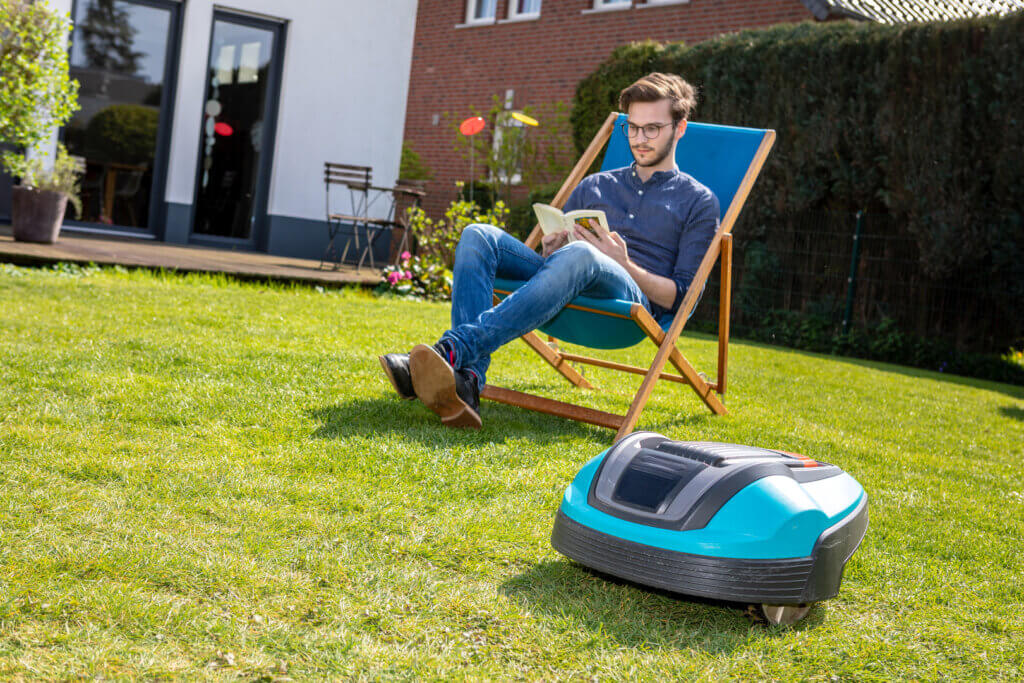
Important for understanding what buyers can expect from a robotic lawnmower is also a fundamental difference to the classic hand-held lawnmower. Robotic mowers are mulching mowers; this means that the clippings do not end up in a bin that the owner would have to empty. Instead, the robot chops the cut stalks into small pieces and lets them trickle into the turf, where they rot. This so-called mulch enriches the soil with nutrients and ensures that it does not dry out. A pleasant side effect of this is that the garden owner does not have to use as much fertiliser for lawn care.
What is the turf?
The turf is the uppermost layer of the soil that is coherently overgrown with grasses and herbs. Thanks to their roots, this layer holds firmly together and prevents erosion by wind and rain. Only a few centimetres below the turf, the subterranean life is teeming with micro-animals such as earthworms or even valuable bacteria.
Time is also an essential factor in gardening. People who are very busy at work often have little time for, and even less desire for, regular lawn care. In this case, the purchase of a robotic lawnmower can be worthwhile in order to find a neatly maintained lawn that invites relaxation at the weekend, despite a heavier workload during the week.
Another advantage of robotic lawnmowers is their low noise level. Most of the models in the comparison have a noise level between 60 and 75 decibels (dB). This means they are not silent, but they are not a rattling lawnmower either. As a guide: 65 decibels is about as loud as a sewing machine or a television at room volume. Electric and petrol lawnmowers average 80 to almost 100 decibels. That is about as loud as the sound of a lorry driving at a distance of five metres from the listener and is already considered to be damaging to hearing. With a robotic lawnmower, normally only the whirring of the cutting blades is audible.
The cost factor
Interested gardeners who look around in the test reports and comparisons of robotic mowers will quickly discover that the good devices are not exactly cheap. The smart Sileno 19060-60 model from Gardena, test winner at Stiftung Warentest, costs around 1,300 euros. By comparison, a conventional petrol lawnmower costs around 300 to 400 euros. The battery-powered lawnmowers in the consumer organisation’s current test are also priced between 300 and 600 euros. For a robotic lawnmower, the buyer must therefore initially put significantly more money on the table. In terms of electricity consumption and maintenance costs, however, the small robotic lawnmowers are more economical and cheaper than the large garden machines. Even with daily use, the annual electricity costs are significantly lower than the fuel costs for a petrol lawnmower. The owner can replace blunted cutting blades himself with a little manual skill. A visit to a specialist workshop is not necessary. If the blades are replaced every four to six weeks, costs of about 15 euros per year can be expected.
Advantages of a robotic lawnmower at a glance
- Saves time and labour
- Low noise level
- Independent operation
- Low energy consumption
- Low maintenance
For which lawns are robotic mowers suitable?
In the data sheets of various tests and comparisons of robotic lawnmowers, the test experts also specify the maximum size of the lawns that the robot can work on. The lawn area can be between 350 and 1,000 square metres.
Size of the lawn
- Small lawn: 200 to 350 square metres
- Medium lawn: from 500 square metres
- Large lawn: 1,000 square metres or more
Many modern robotic lawnmowers can therefore cope with a large lawn. A level lawn that is not winding is the ideal case for the robotic lawnmower. The devices are also equipped with sensors that help the robotic lawnmower to detect obstacles and drive around them or back again. High-quality models can also deal with angled and divided green spaces. However, uneven terrain can be challenging for the robotic lawnmower. According to experts, the best robotic lawnmowers for slopes are the models from Husqvarna. Although the technology of robotic lawnmowers is improving all the time and most of them can handle slopes, garden owners still have to mow steep lawns themselves.
Note: A robotic lawnmower regularly maintains prepared lawns. It is unsuitable for wildly growing meadows or tall grass.
If you have several lawns in your garden that you want the new robotic lawnmower to take care of, you should choose a device with multi-zone programming.
How a robotic lawnmower works
Robotic mowers are small lawnmowers that drive themselves. Once activated, they automatically drive over the lawn and shorten the blades of grass to the desired length. This means that they are permanently in use. Due to the mulching system, in which the cut grass blade tips simply trickle to the ground, there is no container that needs to be emptied. The autonomous lawn mower draws the necessary energy from a lithium-ion battery. Before the battery is completely empty, the robotic lawnmower rolls to the charging station and refuels. Even when the lawn is completely mown, the electronic garden helper retreats to its “garage”, the charging station.
How does the robotic lawnmower know where to mow?
The robotic lawnmower usually orientates itself by a boundary wire laid at ground level or underground. It begins and ends at the charging station and usually runs around the lawn. The garden owner lays the wire at ground level with pegs or digs the wire about five centimetres deep into the lawn soil. This can be done with the help of a spade or with special tools that run over the lawn like a pizza cutter and lay the wire in the furrow.
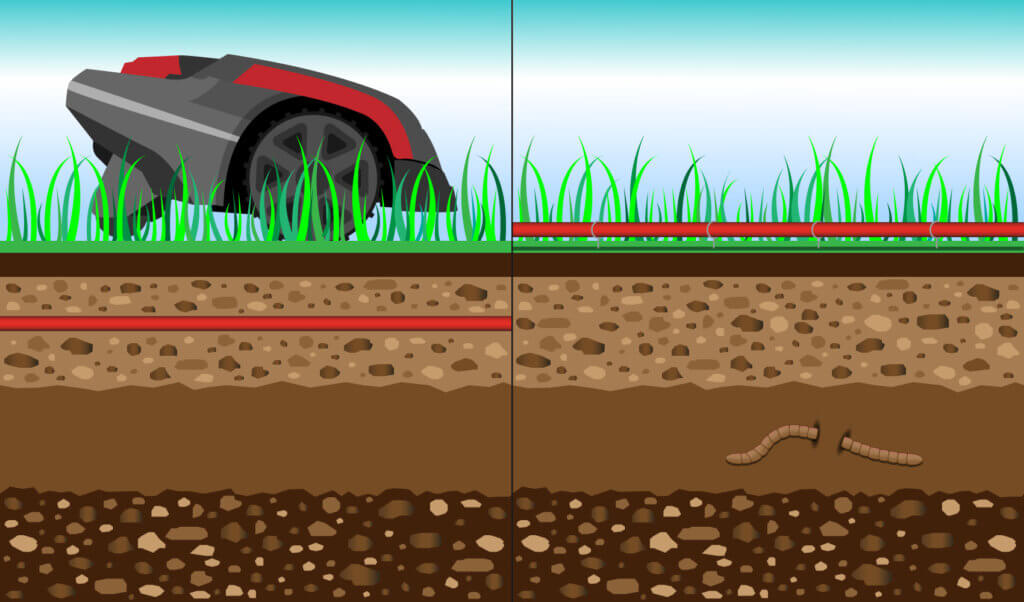
The advantage of burying is aesthetic: the cable to be laid is a few millimetres thick and can therefore still be seen even on a lush lawn; if it is buried, on the other hand, it is not visually disturbing.
A buried cable is also a great advantage when scarifying the lawn, as there is no danger of damaging it with the scarifying tool. However, buried cables are also far less flexible to re-route if the gardener wants to extend or re-route his lawn, for example.
Shrubs, trees or garden ponds should also be enclosed by the boundary wire so that the electronic garden helper can drive around these areas. If the wire supplied is not sufficient, gardeners can purchase extension sets. There are no manufacturer restrictions here; the functional principle is the same for every boundary wire and consumers are free to choose a brand when making additional purchases. The only thing that is important is the quality of the installed cable. For example, its sheathing must be resistant to soil acid and must be able to withstand a little abuse with a garden rake.
A low voltage flows through the boundary wire, which is sufficient to generate a magnetic field. The robotic lawnmower recognises this and knows: “This far and no further! So it makes its mowing rounds on the lawn within this boundary. Incidentally, the strength of the magnetic field generated is comparatively low, so any concerns about electrosmog pollution in the garden are unnecessary. Radiation pollution in the home, such as WLAN, mobile phone networks or radio signals, for example, are much stronger, but are not considered harmful.
Grass edges on fences and walls
Due to their construction, many models do not cut to the very edge of the lawn and leave a small grass margin there, for example, if a fence prevents the lawn from being driven over. The garden owner must trim this edge himself. With some models it is only five to six centimetres, but with others it is more than twenty centimetres. If you want to have as little rework as possible with your robotic lawnmower, you should carefully follow the manufacturer’s instructions beforehand and, if necessary, lay curbs in problematic areas of the lawn.
Robotic lawnmower without boundary wire
As a particularly convenient alternative, there are also robotic mowers that work without a boundary wire. They orient themselves with the help of special lawn sensors. In this way, they recognise whether they are driving on grass or on a stone path. This sounds like a convenient option because the owner does not have to prepare his garden and mark out the lawn areas. However, this type of model is only suitable for clearly demarcated areas. Such a robotic lawnmower would not be able to distinguish the lawn from a flower bed unless it was separated from the lawn by boundary stones, for example.
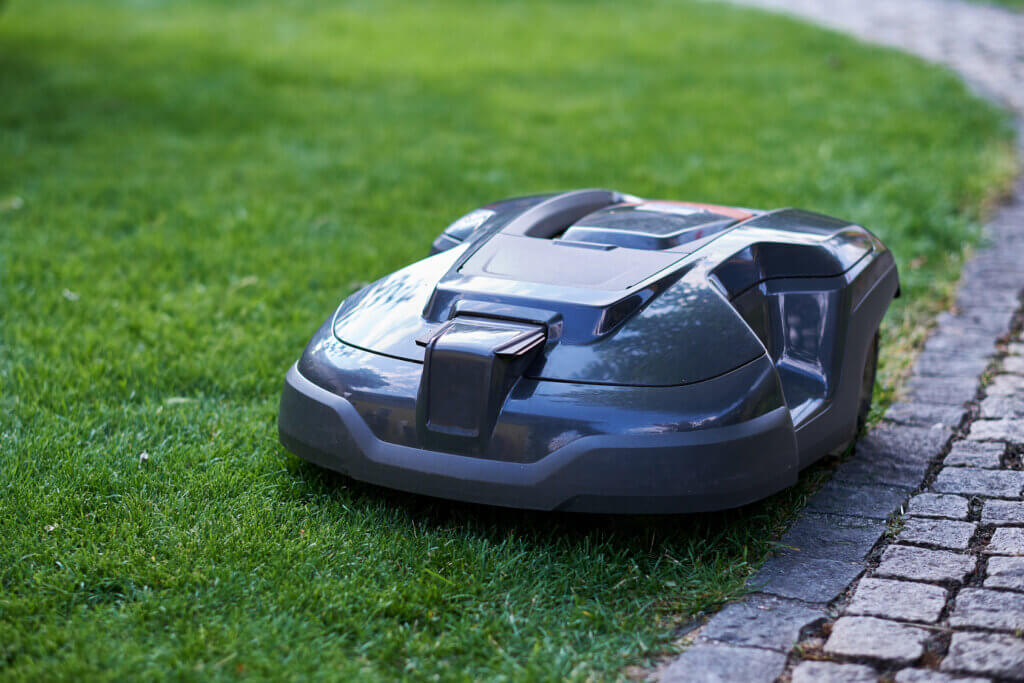
Without a fence between adjacent properties, a sensor-controlled lawn mower would also plough the neighbour’s property. For those who want to maintain a lawn that is clearly defined by natural obstacles, robotic lawnmowers with lawn sensors are a convenient option. However, if you prefer to give the little helper precise instructions as to where it is allowed to scurry around and where under no circumstances, you should go to the trouble of laying cables.
Mowing strategies – What system does the robotic lawnmower use?
Most robotic lawnmowers cruise leisurely over the lawn at a speed of 2 to 5 kilometres per hour, although there are of course more or less pronounced variations in working speed upwards and downwards. Whether the small robotic lawnmower cleanly follows one path after the other or cruises around the lawn depends on the programming. In general, the user has three mowing options to choose from:
- Free movement pattern – The robotic lawnmower moves randomly across the lawn – more or less like a sheep that grazes sometimes here, sometimes there. This gives the lawn a natural look and no traces of the robotic lawnmower are visible on the lawn. However, the mower can sometimes leave blades and tufts of grass behind as it randomly moves across the lawn.
- Orderly paths – The robotic lawnmower travels in parallel paths across the lawn. However, this creates the typical striped pattern on the lawn – the area thus looks like a football field, not a homogeneous, evenly green “carpet”.
- Spiral drive – The automatic lawn mower rolls over the lawn in ever increasing circles. This shape gives round lawns a neat appearance. Driving tracks are also recognisable with this movement pattern.
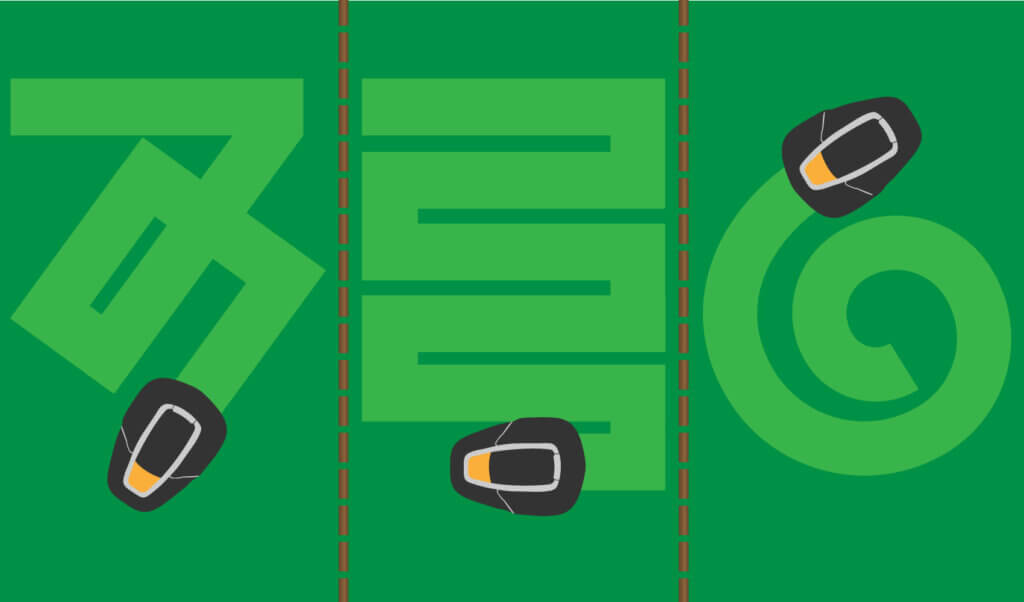
Not every model offers all three options. Which setting options are available depends on the device and the manufacturer.
Modern navigation
Some robotic lawnmowers already use satellite-based positioning and navigation, or GPS for short. This technology supports several functions. On the one hand, the robotic lawnmower can use GPS to better record the lawn area and recognise which areas have not been mowed for a while. These areas are then mown on the next mowing run. In addition, the owner can link the garden helper to an app. Thanks to GPS, the gardener can then see in the app where the robotic lawnmower is. If someone should steal the device from the garden, this tracking function can also be an advantage.
Back to the charging station
When the battery charge is nearing its end, the robotic lawnmower does not stop somewhere on the lawn. Instead, it rolls back to the charging station. In order to be able to set up a charging station, gardeners naturally need an outdoor socket to which the station remains permanently connected in order to be able to send both energy and radio information to the robotic lawnmower. The charging station is ideally roofed and stands on paved ground, for example stone slabs or a plastic surface, in order on the one hand to protect the material of the robotic lawnmower in sun, wind and rain and on the other hand to prevent it from becoming very dirty or even sinking into the ground in bad weather conditions. The robot finds the shortest way back via a guide wire, which the garden owner also lays on the lawn when setting up the robotic lawnmower. There are also models that work without a guide wire. These drive along the
Charging times at the station
Somewhat unduly generalising, it can be said that many robotic lawnmower models charge for about an hour and then mow for an hour. However, there are of course many outliers upwards and downwards. For example, some models allow themselves a whole hour and a half to two hours in the charging station and then mow for “only” 50 minutes, while other models last a whole two hours after 60 minutes in the charging station.
Perimeter wire along, which often takes much longer than the guide wire option.
Buying criteria – How to find the right robotic lawnmower
When choosing the right model and comparing the different robotic mowers, consumers should pay attention to the following aspects:
Cutting width

The larger the cutting width, the more lawn the robot mows in one run and the faster it finishes the job. A large cutting width is therefore optimal for large lawns without obstacles. However, a robotic lawnmower with a large cutting width is naturally also wider. If there are bottlenecks on the lawn, then the narrowest point is the benchmark for the appropriate width that the device may have. The models in the comparison have a cutting width between 170 and 240 millimetres. The Robomow RC 304 is one of the larger models on the market with a cutting width of 280 millimetres.
Cutting height
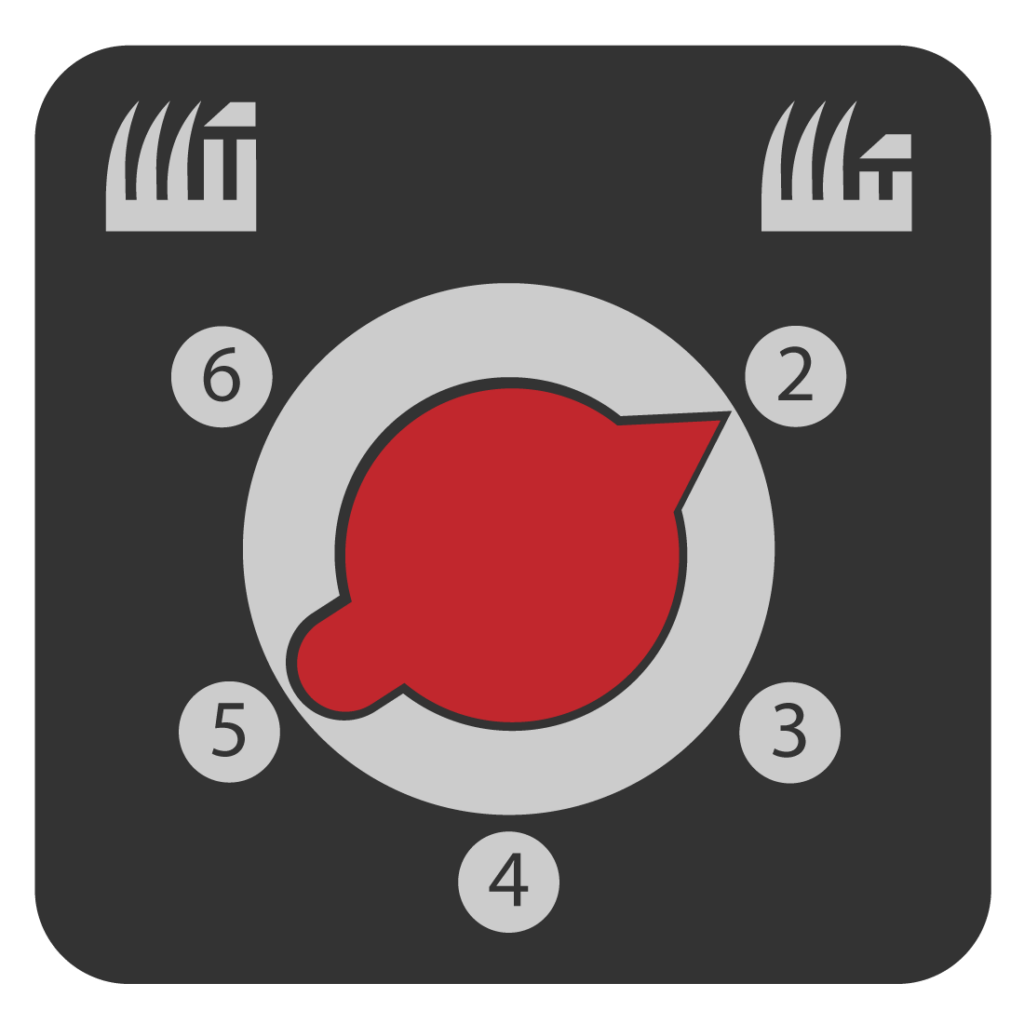
The cutting height setting is also important. The optimum lawn height depends on the use of the lawn. According to experts, an ornamental lawn should be about three centimetres high, while a lawn used as a place to play or relax may be about four to five centimetres high. Most of the models in the robotic lawnmower comparison offer adjustment options between 20 and 60 millimetres. This range should satisfy most garden owners.
Size and weight
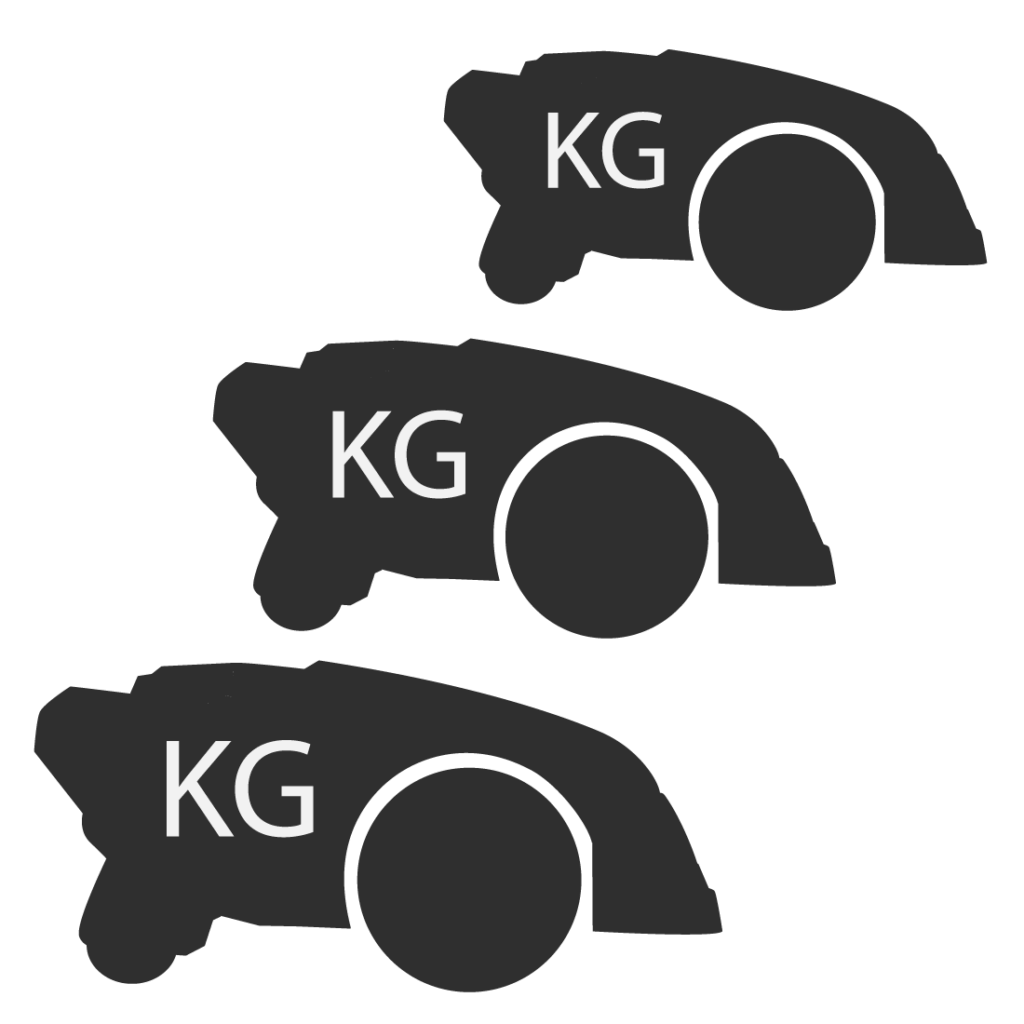
The size and weight of the robotic lawnmower play a role, for example, if the user wants to carry the device from one lawn area to another. However, especially during the mowing process itself, very heavy models can leave unsightly traces of flattened grass on the mown lawn. That’s why we advise giving preference to a lighter robotic mower. Modern robotic mowers usually weigh less than 10 kilograms. The Bosch Indego S+ 350 Connect, for example, is even a lightweight among robotic lawnmowers at 7.5 kilograms.
Volume

Robotic lawnmowers are much quieter than petrol and electric lawnmowers. The noise level of most models is below 70 decibels. This makes them one of the quiet gardening machines. In large lawns, however, the whirring noise of the cutting blades can last for several hours and get on the neighbours’ nerves. Garden owners who want to be sure that their neighbours are not disturbed by their new garden helper should therefore pay particular attention to the noise emission of the robotic lawnmower when buying it.
Charging time

All robotic lawnmowers are powered by a built-in lithium-ion battery. Unlike cordless hoovers, for example, the owner does not have to ensure that the battery of the robotic lawnmower is charged before using it on the lawn. The garden robot takes care of this independently and rolls into its charging station in good time when the energy is running low. The power consumption depends on the battery type or the strength of the battery. Nevertheless, the annual power consumption of a robotic lawnmower is significantly lower than that of battery-operated or electric lawnmowers.
Display and controls
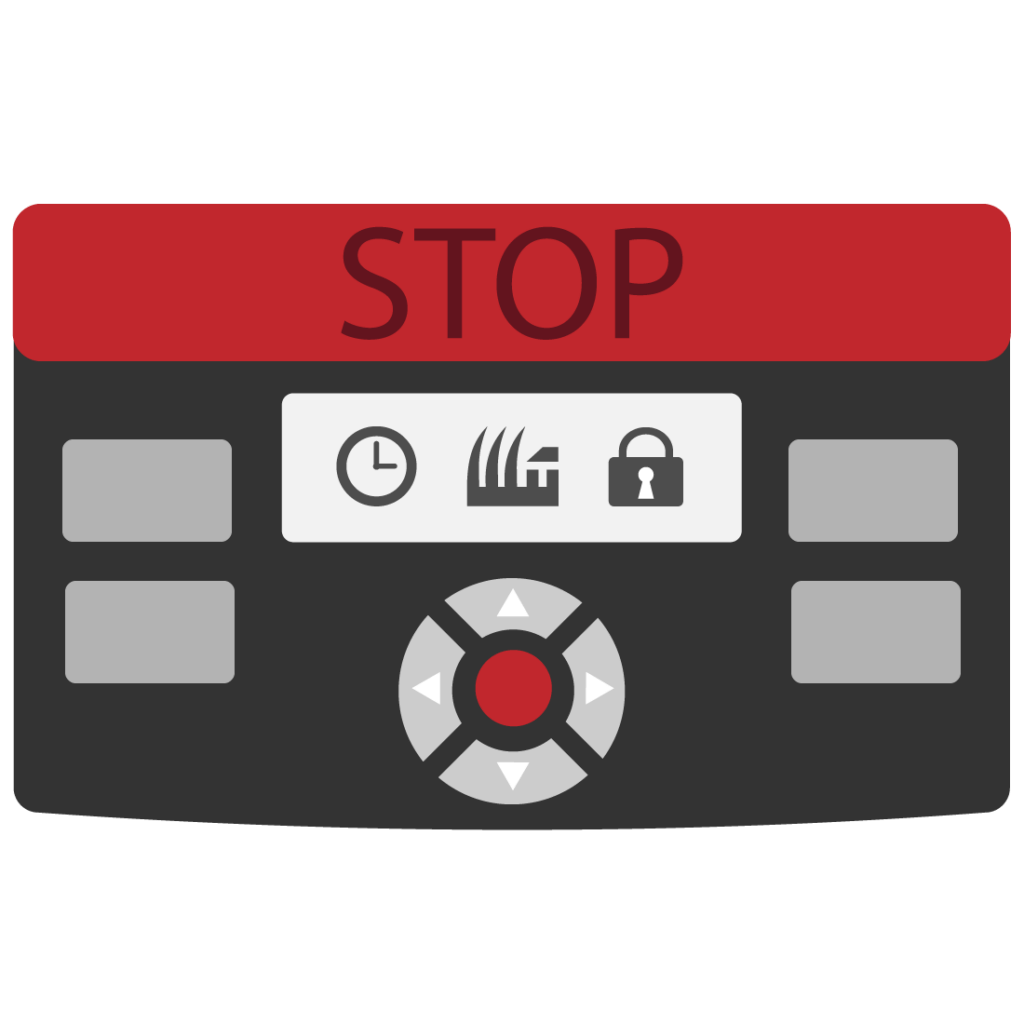
Basic settings such as date, time, operating times and cutting height are entered by the user via a display or control panel on the device. A clear display and simple menu navigation are therefore a clear plus point in the purchase decision. After all, no one wants to spend hours reading the operating instructions before they can use a device. To enable the garden owner to switch off the device in an emergency, the robotic lawnmower should have a clearly visible stop switch.
Control and programming
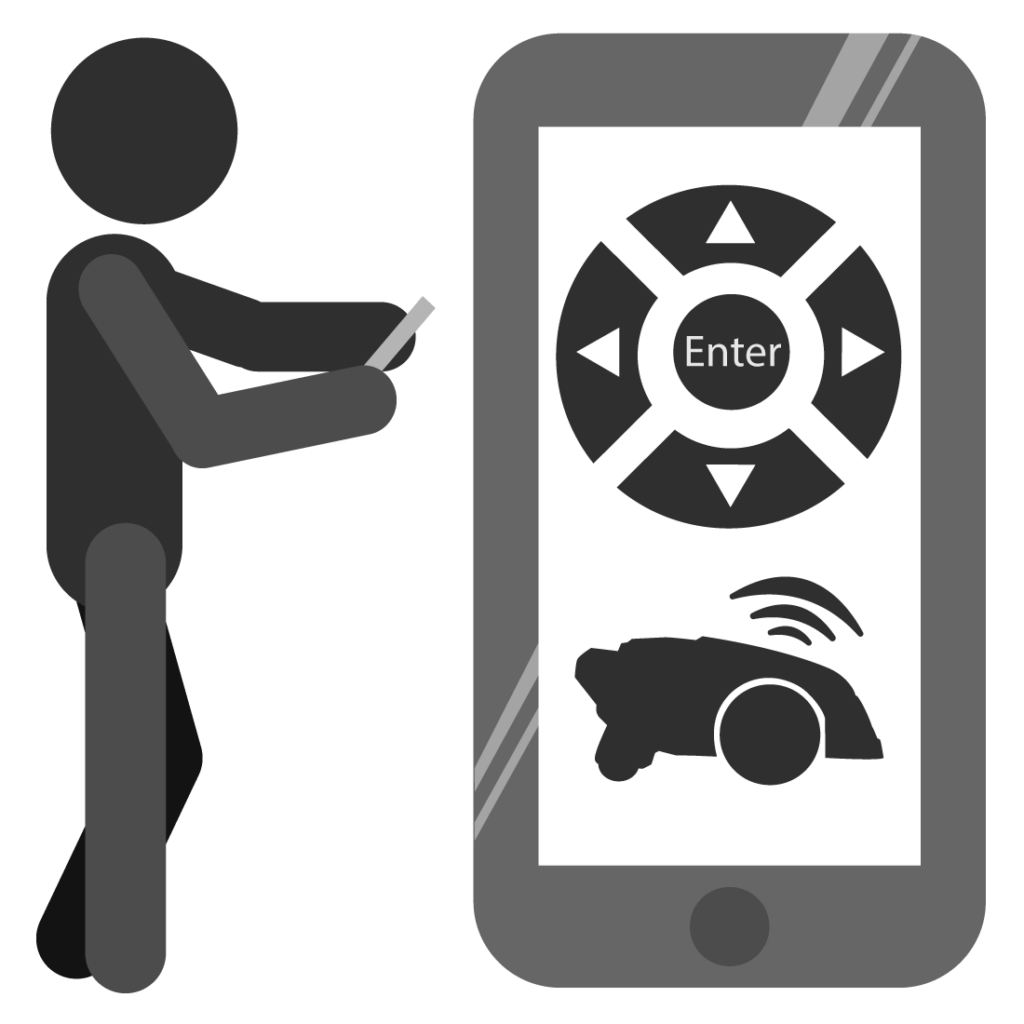
Control and programming
A common feature is a timer, which owners use to set when the robotic lawnmower should be active on the lawn. Increasingly, robotic lawnmowers can be controlled via Bluetooth (e.g. Connect@Home from Husqvarna) or an app on a smartphone or tablet. This allows the user to activate the robotic lawnmower from a distance, without having to bend down, or even while on the move. As a rule, the apps of the robotic mowers support both Android and iOS. Some models can also be controlled with voice assistants such as Alexa (Amazon), Siri (Apple) or Bixby (Samsung). Manufacturers such as Gardena or Husqvarna (Automower series) have their products optionally equipped with WLAN modules.
Wheels

Many robotic mowers are equipped with four wheels: two front and two rear wheels. This design is more stable than the three-wheel variant, especially when mowing a slope. Garden owners looking for a model that is suitable for mowing on slopes should make sure that the rear wheels have a strong tread. This allows the robotic lawnmower to drive safely downhill. For difficult terrain, manufacturers also offer additional equipment for the wheels. Husqvarna, for example, has an off-road kit in its range that improves the slope performance of the robotic lawnmower.
For precise planners: the area performance
The size of the lawn and the planned duration of use of the robotic lawnmower play an important role in the purchase decision. After all, the lawn should be mown completely. Manufacturers specify the maximum lawn area that the robotic lawnmower can mow. However, this is only achieved if the robot is also used to its performance limits, i.e. per day – depending on the model – about 13 to – theoretically – 24 hours on very large lawns. If the garden owner limits the time of use to 40 hours per week, for example, the self-propelled lawnmower will also manage less area. Most manufacturers help the user with this question by offering suggested schedules.
Example:
- The lawn area is 300 square metres.
- The robotic lawnmower is to work in the family garden only from 6 a.m. to 2 p.m. and only five days a week. This means that it is in operation for a total of 40 hours.
- The robotic lawnmower can cover a maximum area of 000 square metres, but only if it is in operation for around 18 hours a day. In total, the manufacturer expects 126 hours of operation per week to achieve the 1,000 square metres.
With a usage time of 40 hours per week, the robot mows around 318 square metres on each of its “eight-hour working days”. This means that the robotic lawnmower model is optimal for the size of the lawn.
For a short period of use, a model with a larger area capacity can be better than a cheaper one that mows less area. Otherwise, the robotic lawnmower may not be able to mow the entire lawn in the set operating time.
When it’s sloping: the climbing ability
If you have a garden with a slope, you should make sure that the robotic lawnmower can cope with the slope. Most models can manage a difference in height of about 25 to 35 percent. Some devices, such as the AL-KO Robolinho 500 E, also have no problem with slopes of up to 45 percent, according to the manufacturer.
With these specifications, consumers should remember that these are maximum values that the self-propelled lawn mower only achieves under optimal conditions. For example, the slope should be within the lawn to be mowed. If the slope is at the edge of the mowing area, then the robotic lawnmower will often not manage the maximum slope. For example, many robotic lawnmowers cannot turn on a slope. We therefore advise you to calculate with half the specified maximum slope if the boundary wire is on a slope.
How to calculate the slope in the garden
To calculate the slope, you need to determine the height and length of the slope. To do this, look at the diagram below.
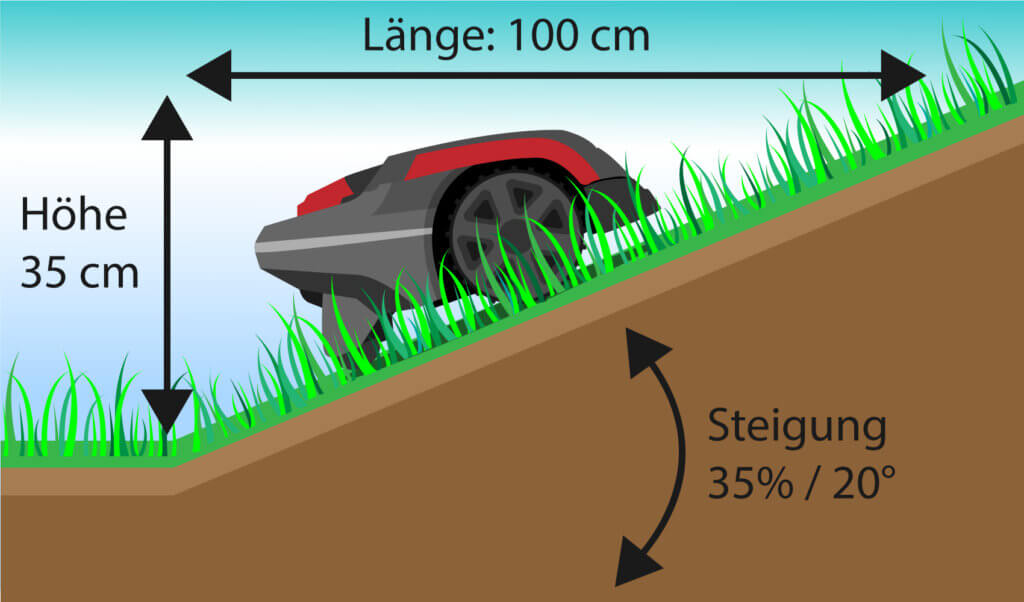
When doing this, make sure that the measurements determined have the same unit (i.e. only in centimetres or in metres). Then divide the height by the length. The value 0.35 corresponds to 35 percent. The slope of the terrain is therefore 35 percent.
The following devices can be of help for measuring height and distance:
- A long pole
- A tape measure
- A spirit level
Protection and safety through sensors
Robotic mowers may sometimes look like toy cars when they make their rounds on the lawn. As a consumer, it is easy to forget that sharp cutting blades rotate inside the device. Manufacturers are aware of the risks and equip their robotic lawnmowers with appropriate safety features. These include various sensors that ensure that the risk of injury is reduced to a minimum. The new robotic lawnmower should have the following safety sensors:
| Sensor type | Function |
|---|---|
| Lift sensor | Stops the mowing process as soon as the robotic lawnmower is lifted. |
| Tilt sensor | Stops the cutting blades as soon as the device tilts too much or tips over. |
| Bump sensor/Collision sensor | Detects that the robotic lawnmower has bumped into an obstacle and ensures that the unit reverses. |
| Slope sensor | Changes the direction of travel or makes the machine turn around if the terrain becomes too steep. |
| Obstacle sensor | Detects obstacles and causes the robotic lawnmower to change direction. |
An emergency stop switch is helpful if the garden owner wants to stop the active robotic lawnmower spontaneously. The rotating blades stop at the push of a button.
A child safety lock prevents small children from switching on the robotic lawnmower. For example, the device requires a PIN before it starts moving.
With their sensor equipment and robust construction, robotic mowers are generally very safe. Nevertheless, garden owners should make sure that the lawn is clear when the robotic lawnmower is active. No objects should be lying around on the lawn. Small children or pets should also not play on the lawn unsupervised when the robot is on the move. The risk of injury is enormous due to the razor-sharp blades, especially if curious small children get close to the mowers with their urge to touch and explore everything.
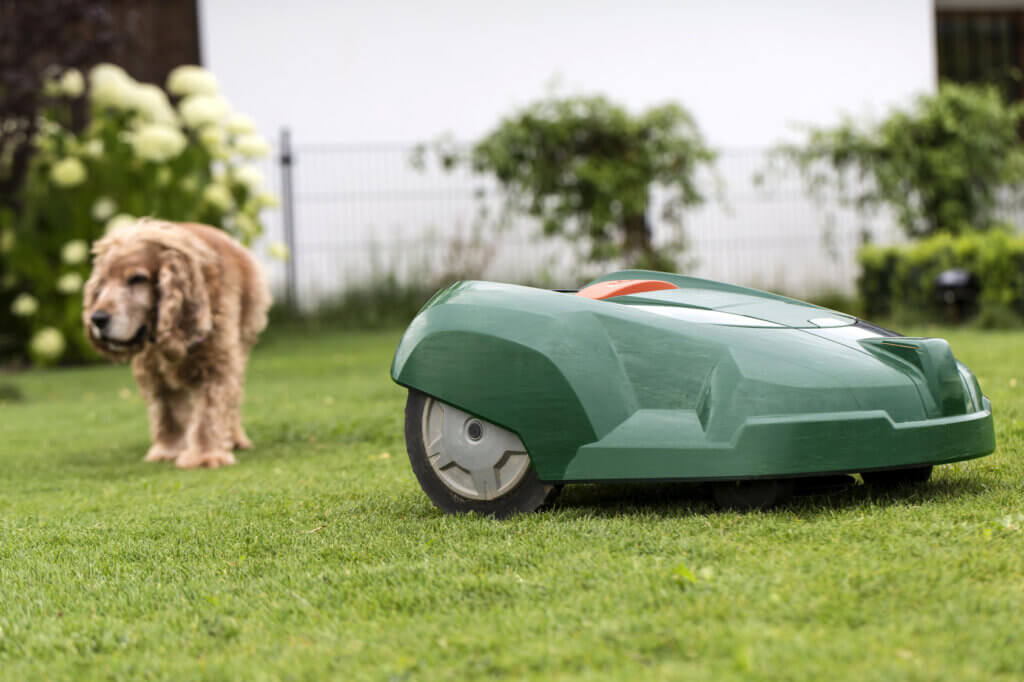
Is protection against theft possible?
The security functions also include theft protection. The PIN code also plays a role here. If the robotic lawnmower is lifted, it switches off automatically thanks to the lift sensor. Just as with the child safety lock, the device requires a numerical code when starting. Anyone who does not know the password cannot use the robotic lawnmower. Some models are also equipped with an acoustic alarm signal that sounds when the robotic lawnmower is lifted and carried away from the property or out of the mowing area, or if the wrong PIN is entered. For robotic lawnmowers with GPS, this extra function can be useful for tracking. The owner can track exactly where his robotic lawnmower has disappeared to and forward the data to the police so that they can find the device again and ideally arrest the thief.
Nevertheless, every prospective buyer should be aware that a robotic lawnmower is on the green unsupervised most of the time. Gardens and house properties are usually not sealed off with high-security fences, but can be entered with little effort. If thieves scout the grounds and come at night to quickly steal the robot and its charging station, the devices themselves do not have any absolutely effective protective mechanisms to prevent the theft. If the thief realises afterwards that he can’t do anything with a robotic lawnmower because of the missing PIN, he is unlikely to bring it back – the damage is done to the owner in any case.
The key to more security when using a robotic lawnmower therefore lies on the one hand in useful additional functions of the little helpers such as alarms and GPS tracking, but on the other hand also in securing the property itself. Thieves are generally allergic to motion detectors, alarm systems and surveillance cameras and prefer to stay away from them.
Using robotic lawnmowers in rain and cold?
Automatic lawn mowers are rainproof and can be used without hesitation when it rains or even hails lightly. Nevertheless, many models are equipped with a rain sensor, as manufacturers want to exclude any unnecessary stress or potential damage. The sensor ensures that the robot stops mowing and returns to the charging station as soon as it starts to rain.
There is disagreement among experts as to whether or not a robotic lawnmower should operate in the rain. Mowing wet grass can lead to more dirt and faster wear of the cutting blades. The owner must therefore clean the electronic garden helper more frequently. Older and heavy equipment can leave unsightly marks on the wet lawn because they flatten the blades. Some devices also become noisier when mowing wet grass and consume more energy. For these reasons, experts advocate the rain sensor. Others argue that wet grass is cut more gently and also grows faster. If the rain continues for a long time and the grass is not trimmed, the lawn can grow so high that the automatic lawn mower can hardly cope with it.
With some models, the user can therefore adjust the sensitivity or deactivate the rain sensor. For example, Gardena robotic mowers do not have such a sensor. According to the supplier, they can also mow wet grass without any problems. In the event of heavy, torrential rain, however, these devices should also be brought out into the dry.
Do not mulch when it is too wet
However, gardeners should not use the robotic lawnmower during longer periods of rain, when the lawn is wet for days, or during heavy rain. The reason: robotic mowers are mulching mowers that leave the clippings on the lawn for fertilisation. This can be a problem with wet grass, as wet grass is much heavier than dry grass. If the lawn were covered several times in a row with a wet, heavy layer of mulch, it would no longer be able to breathe. In addition, not enough light would reach the blades of grass and the soil. The result would be unsightly holes or discolouration in the grass carpet. It is therefore important to weigh up up to which rain intensity and frequency you should still let your mowing helper cut the lawn, and from when on you should use a conventional lawn mower with a collection container.
Winterising the robotic lawnmower correctly
The robotic lawnmower and charging station should not be left outside in winter. Freezing temperatures damage the electronics and the battery. Recharge the robot, clean the set dry and store it indoors. The boundary wire, however, remains on or under the ground; the gardener clips its ends off the charging station and protects them either with special winter protection boxes or simply carefully enclosing insulating tape.
Manufacturers at a glance
The number of manufacturers of robotic lawnmowers is quite large, which makes comparing the devices somewhat difficult.
Well-known lawn mower manufacturers
The best-known brands include Gardena, Husqvarna, AL-KO, Worx, Robomow, Bosch, Honda and Viking.
The Swedish company Husqvarna brought the first robotic mower onto the market in 1995. Today, the models from the Automower range are among the most popular devices. They belong to the higher price segment (from 1,600 euros RRP from the manufacturer), but feature extras such as app control or GPS navigation, such as the award-winning Automower 315 model. Only the simpler Automower 105 (priced at around 1,000 euros RRP) comes with only the basic equipment. It is also only suitable for lawns with a maximum size of 600 square metres.
Gardena is known to garden owners as a brand for high-quality gardening tools whose range is available worldwide. With the SILENO robotic mowers, the manufacturer offers the quietest devices in this segment. Their noise level is only 58 decibels. One of the most popular devices is the smart SILENO + robotic lawnmower, which can be controlled via app. It maintains lawns of up to 1,300 square metres. The price is in the middle range at around 1,500 euros.
Worx is a brand of the Positec Group, which markets its gardening equipment and power tools worldwide. With the Landroid devices from Worx, garden owners get a smart robotic mower in the home. The models are available for lawns from 300 to 2,000 square metres. This range thus offers a suitable robotic lawnmower for small and large gardens. Furthermore, the owner can supplement the device with various additional modules such as voice control, anti-collision system or radio connection.
The Israeli company Robomow is also one of the early producers of robotic lawnmowers. As early as 1997, the company presented the Robomow Classic at a trade fair and brought the device to the market one year later. Robomow offers several device classes. For lawns between 200 and 1,200 square metres, the models from the RX and RC series are recommended. The compact RX models cost less than 1,000 euros. However, they are only intended for smaller lawns between 150 and 400 square metres. They are convincing because they are easy to operate and equipped with smart functions. Critical is the fact that the inexpensive models in this range are equipped with a lead-acid battery and not with a more modern lithium-ion battery. The somewhat larger RC robotic mowers from Robomow are a recommendation for larger lawns of 500 to 2,000 square metres because of their cutting width of 28 centimetres. Consumers spend between 1,100 and 2,000 euros for such a model.
In most robotic lawnmower tests you will find at least one robotic lawnmower from Bosch. The range of the German manufacturer is not quite as extensive in this area, but the devices convince with very good performance. The current Bosch Indego models are recommended for small and medium-sized gardens and are priced between 900 and 1,100 euros.
With its Robolinho series, the AL-KO company offers high-quality entry-level machines for about 1,000 euros. They are suitable for lawns of up to 500 square metres. If you are looking for a robotic lawnmower with more area performance and climbing ability, take a look at AL-KO’s premium range. The price range then lies between 1,300 and 2,100 euros.
Garden owners can also let a small Honda roll over the lawn. With the Miimo range, the Japanese company offers several models for large gardens. However, the costs are in the high segment for this brand. The user has to pay between 2,000 and 3,000 euros for a Honda robotic lawnmower.
The iMow robotic mowers from Viking are also in the high price segment. All eight variants cost more than 1,000 euros each. The compact, green “grass frogs” are available for small, medium and large lawns. The more expensive devices of this brand also have modern equipment with GPS tracking and smartphone control.

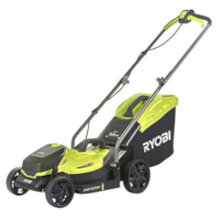
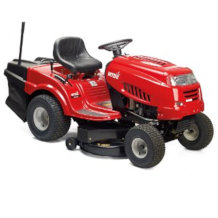
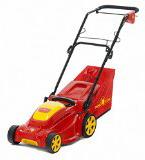

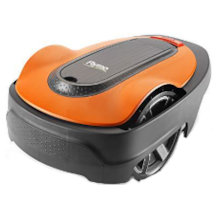
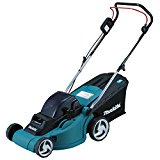
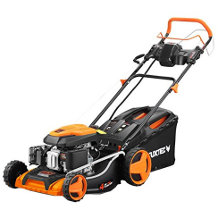

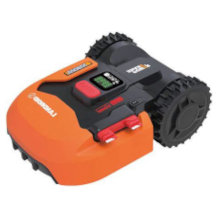
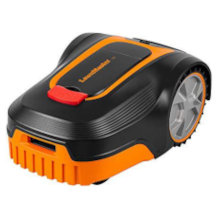
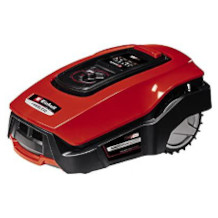
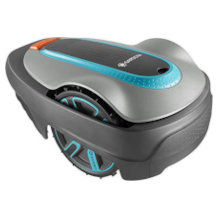
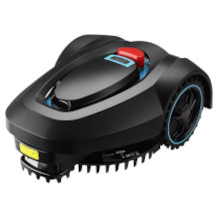
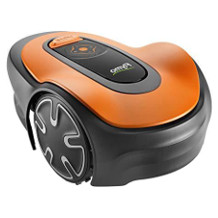
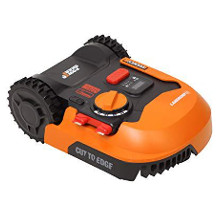

 1,429 reviews
1,429 reviews
